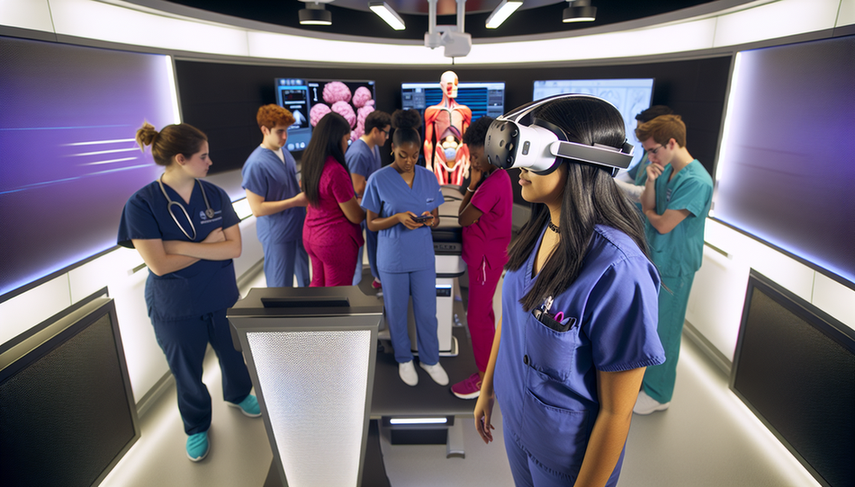Resident Training with Immersive Reality: Simulated Diagnosis for Safer Medical Practice

The resident training in medicine has significantly evolved with the incorporation of advanced technologies such as immersive reality. This technology provides a safe and controlled environment for simulated diagnosis, allowing residents to practice and refine their skills without putting patients at risk. Safe practice is a primary goal in medical education, and immersive reality emerges as a powerful tool to achieve it.
Diving Deeper into Immersive Reality in Medical Training
Immersive reality has proven to be an effective tool in various areas of medicine. For instance, in training for image-guided interventions in low- and middle-income countries, where virtual reality (VR) allows residents to practice procedures like breast biopsies remotely. This technology not only enhances accessibility to training but also provides shared experiences of procedures that are essential for learning.
In the interdisciplinary management of trauma, immersive reality has been evaluated as an effective training tool. A study conducted at the University Medical Center Mainz, Germany, showed that residents felt significantly more confident after training in an immersive virtual reality environment, suggesting that this technology can improve preparedness for emergency situations.
Furthermore, in the field of surgery, immersive reality has been utilized to enhance the visualization of operative surgical anatomy. Three-dimensional (3D) visualization platforms allow surgeons to learn and practice operative techniques in a virtual environment that simulates real-life conditions, as demonstrated in robotic surgical training.
Conclusions
The integration of immersive reality in resident training offers multiple benefits, from improving safety in medical practice to refining technical skills in a controlled environment. This technology not only facilitates the learning of complex procedures but also promotes safe practice by allowing residents to experience challenging clinical situations without risk to patients. As technology continues to advance, its role in medical education is likely to expand, transforming the way we train future physicians.
Referencias
- [1] Virtual Reality Simulation-Based Training in Image-Guided Breast Intervention in Low- and Middle-Income Countries
- [2] Immersive virtual reality for interdisciplinary trauma management - initial evaluation of a training tool prototype
- [3] Immersive reality for robotic surgical training: a pilot study using 3D visors for immersive view of the operating field
Created 24/1/2025
